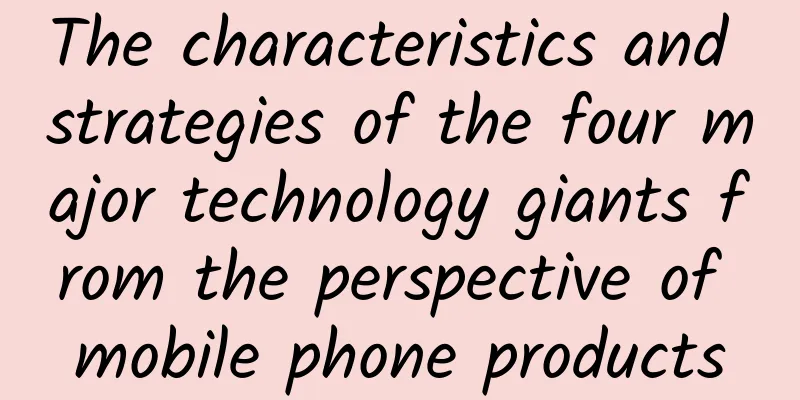Why did Lenovo get a great bargain by buying MOTO?

|
“Ownership of more than 2,000 patents and the right to use 21,000 patents.” When talking about Lenovo's acquisition of Motorola, this is the "mantra" that Lenovo's Yang Yuanqing likes to say on many occasions. According to the acquisition agreement reached between Lenovo Group and Google on Motorola Mobility, Lenovo paid a transaction price of approximately US$2.91 billion and obtained three core items: the Motorola brand, 3,500 employees and a large patent portfolio - ownership of more than 2,000 patents and cross-licensing authorization for 21,000 patents. In terms of purchase cost, for the same object, Google paid $12.5 billion for it in 2011, but Lenovo only spent $2.91 billion when it took over in 2014, which is one-fifth of Google's initial purchase price. It was a "great bargain" - in fact, from the perspective of intellectual property rights, if you knew how short Lenovo's mobile phone "patent underwear" was before, you would feel that Lenovo not only got a bargain in this transaction, but also "made a fortune". Based on the statistical data from the website of the State Intellectual Property Office, we will take a detailed look at Lenovo's mobile phone patent "assets" before the acquisition of MOTO from multiple dimensions such as the number of patents, patent awareness, patent structure, patent trends and application time distribution. Patent scale: It looks impressive at first glance, but in fact there are not many mobile phone patents From the above table, we can see that in terms of the total number of searchable patents, Lenovo is 2.7 times that of Apple; in terms of the number of invention publications, Lenovo is 3.1 times that of Apple; in terms of the number of invention authorizations, Lenovo is 1.3 times that of Apple; in terms of the number of utility model patents, Lenovo is 3.4 times that of Apple; and in terms of the number of design patents, Lenovo is 1.7 times that of Apple. At first glance, Lenovo is far ahead of Apple in patent applications and protection, which are indicators of innovation and strength. This may be the reason why Lenovo's Yang Yuanqing dares to publicly challenge "Apple" many times and declare in media interviews that "Lenovo has the greatest hope of challenging Apple" and "Lenovo will be the final winner." However, if you really think that Lenovo's mobile phones have a chance to surpass Apple, it may seem "hasty". In fact, Lenovo's mobile phone-related patents are not as many as they seem. Lenovo has several subsidiaries, covering a wide range of fields, from investment to industry, from products to sales, from mobile phones and computers to network security. However, what is puzzling is that although Lenovo has a subsidiary dedicated to mobile phone business - Lenovo Mobile Communications Technology Co., Ltd., mobile phone-related patents are scattered among multiple legal entities, including Lenovo (Beijing) Co., Ltd., Xiamen Yixiang Communications R&D Center Co., Ltd., Lenovo Mobile Communications (Wuhan) Co., Ltd., Lenovo Mobile Communications Software (Wuhan) Co., Ltd., Lenovo Innovation Co., Ltd. (Hong Kong) and Lenovo Mobile Communications Technology Co., Ltd., etc. Even so, the situation of Lenovo's mobile phone-related patents is not optimistic. Compared with some mobile phone manufacturers focusing on the mobile phone business, Lenovo's mobile phone patents are significantly behind. From the above table, we can see that in terms of the number of invention authorizations, Coolpad is 6.2 times that of Lenovo; in terms of the number of utility model patents, Coolpad is 4 times that of Lenovo; only in terms of the number of design patents, Lenovo is only 3.2 times that of Coolpad. It should be noted that the Lenovo mobile phone patents in the table here only refer to patents directly related to mobile phones. Specifically, all patents held by Xiamen Yixiang Communication R&D Center Co., Ltd., Lenovo Mobile Communications (Wuhan) Co., Ltd., Lenovo Mobile Communications Software (Wuhan) Co., Ltd. and Lenovo Mobile Communications Technology Co., Ltd. and some patents held by Lenovo (Beijing) Co., Ltd. directly related to mobile phones. There may be a situation of "missing a thousand". However, we can still see that Lenovo's mobile phone invention patents in the field of competitiveness and defense are not as much as expected. This actually reflects some of Lenovo's "character" - a sales-driven company rather than a technology-driven company. When Lenovo was first founded, there was an internal dispute over whether to develop in the following directions: "technology, industry and trade" or "trade, industry and technology". At that time, Liu Chuanzhi advocated "trade, industry and technology", while Ni Guangnan advocated "technology, industry and trade". In fact, the focus of the dispute between the two, interpreted in the current discourse environment, is whether Lenovo wants to take the technology-driven route or the sales-driven route. Before Lenovo acquired IBM's business, it should be said that Lenovo had always been sales-driven, with making money as its top priority. After acquiring IBM, Lenovo began to continuously strengthen its technology research and development and accumulation, which is also the reason why Lenovo's overall patent scale is very high - it has accumulated a large number of computer-related patents. Patent structure: Compared with Coolpad, Lenovo mobile phones seem to prefer appearance design Lenovo's strategy for its mobile phone business has also "swayed" many times. Lenovo Mobile Communications Technology Co., Ltd., a subsidiary of Lenovo that is responsible for Lenovo's mobile phone business, was established in April 2002, less than a year earlier than Meizu. However, unlike Meizu, Lenovo Mobile is relatively focused on patent protection and accumulation. As mentioned above, whether it is Lenovo's parent company or Lenovo's subsidiary responsible for mobile phone business, the proportion of appearance design in the patent composition is very high. From the above figure, we can see that among the authorized patents obtained, Lenovo's proportions in invention patents, utility models, and appearance designs are 21%, 28%, and 51%, respectively, while Coolpad's proportions are 51%, 43%, and 6%, respectively. In fact, Lenovo's patent structure is very similar to Meizu's. Among Meizu's authorized patents, the proportions of invention patents, utility models, and appearance designs are 4%, 15%, and 81%, respectively. Lenovo's patent shortcoming: focusing on design instead of research and development, and having a weak foundation In the era of feature phones, Lenovo Mobile should still be a model for practicing the "trade, industry and technology" sales-driven model. It once hired S and S to endorse Lenovo Mobile phones at a high price, and comprehensively deployed channels such as specialty stores, hypermarkets and operators. After entering the era of smart phones, Lenovo Mobile still used the "feature phone thinking" to sell "smart phones" and adopted the "sea of machines strategy". To this end, we further analyzed the application time distribution of various patents that Lenovo Mobile Communications Technology Co., Ltd. (hereinafter referred to as "Lenovo Mobile"), which is Lenovo's subsidiary responsible for mobile phone business, has obtained patent authorization. From the above three figures, we can see that from the overall strategy point of view, in the era of feature phones, Lenovo Mobile, a subsidiary of Lenovo that specializes in mobile phone business, applied for 32 designs in the first three years of its establishment, which is 6 times the sum of its invention patents (3) and utility models (2). This is enough to show that when Lenovo entered the mobile phone market, it still showed obvious "trade, industry and technology" characteristics. Specifically speaking of the patent protection of Lenovo's mobile phone design, we can see that 2007 and 2011 were the "peak periods" of Lenovo's mobile phone business design. These two time points are also key time points in the cross-generation of the mobile phone market. Because 2007 was the "peak moment" of the feature phone era, and 2011 was the "rise time" of smartphones. These two key moments became the "high points" of appearance design applications for Lenovo's mobile phone business, and also demonstrated that Lenovo's mobile phone business has always adhered to the "sea of machines strategy" during the cross-generation upgrade from feature phones to smartphones. This trend did not change until after 2013. This preference, trend and characteristic also explains the questions at the beginning of this article - why Yang Yuanqing often talks about "ownership of more than 2,000 patents and the right to use 21,000 patents". In the final analysis, it is because Lenovo's own "patent shorts" are really "too short" and cannot completely cover many embarrassing parts. Now, Lenovo has taken Motorola into its pocket. According to Lenovo's plan, on January 26 this year, Motorola will return to the mobile phone market after being "transformed" by Lenovo. So, would you buy a Motorola made by Lenovo? In January 2014, Lenovo Group acquired Motorola Mobility from Google for US$2.91 billion. Lenovo Group obtained more than 2,000 patents from Google and obtained cross-licensing of 21,000 patents from Google. In March 2014, Lenovo acquired 21 patents held by patent organization UnwiredPlanet for US$100 million, including 3G, LTE patents and other important mobile patents, and obtained cross-licensing of 2,500 patents at the same time. In April 2014, Lenovo acquired a portfolio of more than 3,800 patents applied for by NEC in many countries around the world. The patented technologies involved have been widely used in the production and manufacturing of smartphones. As a winner of Toutiao's Qingyun Plan and Baijiahao's Bai+ Plan, the 2019 Baidu Digital Author of the Year, the Baijiahao's Most Popular Author in the Technology Field, the 2019 Sogou Technology and Culture Author, and the 2021 Baijiahao Quarterly Influential Creator, he has won many awards, including the 2013 Sohu Best Industry Media Person, the 2015 China New Media Entrepreneurship Competition Beijing Third Place, the 2015 Guangmang Experience Award, the 2015 China New Media Entrepreneurship Competition Finals Third Place, and the 2018 Baidu Dynamic Annual Powerful Celebrity. |
<<: Why does Microsoft's holographic glasses HoloLens stand out?
>>: Is Hololens the next Google Glass?
Recommend
Analysis of advertising video materials!
In recent years, with the increasing demand of th...
You want to protect your privacy but it hurts your eyes. Is anti-peep film a "tax on your IQ"?
Review expert: Zhou Hongzhi, senior laboratory te...
Sister Abao "Ordinary People's Workplace Counterattack Training Camp"
Course Catalog ├──Chapter 1 Opening Ceremony | └─...
Avoid lightning! This is the seat where you feel the most turbulence in an airplane
Review expert: Zhao Liangyu, Associate Professor,...
Xiaomi, OV establish a cross-brand transfer alliance, mobile phone file data can be transferred across brands
On August 19, the three major mobile phone manufa...
Douyin series "Peking University Huahua, Tsinghua University and Peking University Academic Masters' Learning Power"
Douyin series "Peking University Huahua, Tsi...
Pollen warning! These areas are about to enter the peak season for allergies, please keep the protection guide
Spring is a season when everything comes back to ...
A complete online event plan!
How to write an online event plan ? The planning ...
How healthy is quinoa that something so unpalatable can become so popular?
In the eyes of many people, food is divided into ...
Orange warning! Typhoon Siam, the third typhoon this year, is about to land. Please keep this defense guide
The first typhoon to land in our country this yea...
APP promotion tips: 100,000 yuan brings 20 million users
Last time, I wrote an article titled "How to...
The simplest video chat tool Xiaoyu accompany robot experience at home
With the help of technology, being able to see th...
Fast for two days a week, is the 5:2 fasting method the “savior” for “fatty liver”?
gossip "If you go hungry for two days a week...
TabBarView
introduce TabBarView implements the category menu...
[Must-Read for Internet People] After a few years in the industry, where should your future be?
Anyone who has been in this industry for three to...









